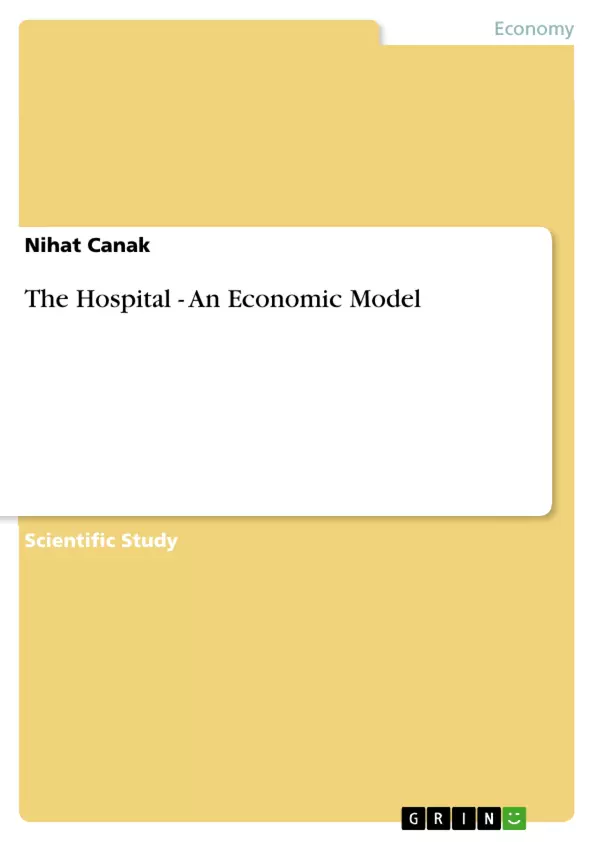The financing of costs of services in hospitals is a basic and growing problem in Europe. Considering the hospital as a manufacturing company, its product is the health of the patients. But to measure this product is quite hard, and therefore it is difficult to allocate an adequate price for it. Thus, the ascertainment of hospital services occurs by an orientation on inputs. But the menace of such a measuring is that hospitals would increase their inputs and thereby increase costs to maximize their revenues.
Another approach defines the medical care partially as a consumer good. By analyzing the cost-utility-consideration and the evaluation of the medical care, also in this case “The law of diminishing returns” can be noticed. Therefore, more input (expenditures or costs) in the health care system doesn’t automatically lead to more output (morbidity or mortality). Facing the problem of increasing costs and the law of diminishing returns, hospitals in Europe start to change their thinking. More and more the organizational structures transform from a general department focused hospital to a patient and economic focused company. Therefore, medical directors are about to be replaced by business managers in the hierarchic structure. These leaders start to use business models and also economic models to increase efficiency, quality and profit in the hospital. The following chapter introduces one approach of an economic model applied to a hospital.
Inhaltsverzeichnis (Table of Contents)
- The situation of the health care in Europe with a focus on hospitals
- The economic model
- Processes in the hospital
- The goals and variables of the model
- The model
- Maximizing the profit
- Appraisal
Zielsetzung und Themenschwerpunkte (Objectives and Key Themes)
This paper examines the economic model of a hospital, analyzing it as a business entity with a focus on efficiency, quality, and profit maximization. It utilizes production theory and cost-benefit analysis to develop a framework for understanding the hospital's operations and achieving its objectives.
- The challenges of measuring and pricing healthcare services in Europe
- The impact of the law of diminishing returns on healthcare expenditures
- The transition of hospital management from a clinical focus to a business-oriented approach
- The development of economic models to enhance efficiency, quality, and profitability in hospitals
- The application of production theory to clinical treatment processes in hospitals
Zusammenfassung der Kapitel (Chapter Summaries)
- The situation of the health care in Europe with a focus on hospitals: This chapter examines the challenges of financing healthcare services in Europe, particularly for hospitals. It discusses the difficulty of measuring the output of healthcare services (i.e., patient health) and the resulting reliance on input-based cost measurement, which can lead to inflated costs. The chapter also explores the application of consumer goods theory to healthcare, highlighting the law of diminishing returns and the need for a more cost-effective and efficient approach to healthcare delivery.
- The economic model: This chapter introduces a conceptual framework for modeling a hospital as an economic entity. It emphasizes the importance of identifying key processes within the hospital, such as patient admission, diagnosis, treatment, and discharge. The chapter then introduces key variables, including the number of beds, treatments, in-patient days, and factors of production (e.g., labor and equipment), which are used to analyze the hospital's costs, revenues, and profit.
Schlüsselwörter (Keywords)
The primary keywords and focus topics of this work include: hospital economics, healthcare financing, production theory, cost-benefit analysis, efficiency, quality, profit maximization, law of diminishing returns, clinical pathways, value chain, patient care, input-based measurement, and healthcare delivery.
- Quote paper
- M.B.A. Nihat Canak (Author), 2005, The Hospital - An Economic Model, Munich, GRIN Verlag, https://www.grin.com/document/64767



